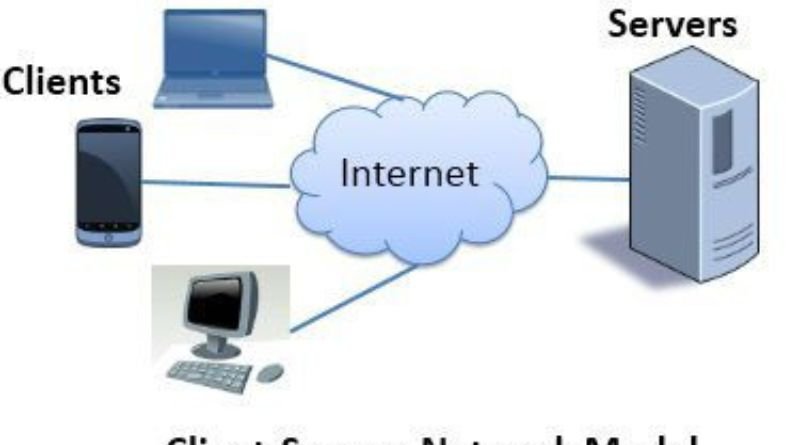Why you should care about the difference between client/server and peer-to-peer networks

A client/server network is where most of the work happens on one machine, also known as the server. A peer-to-peer network, on the other hand, splits the workload between different computers in the network, also known as peers. Each one of these types of networks is best suited to certain tasks, and understanding the pros and cons of each will help you make an informed decision about which type to choose when building your own computer system or corporate network.
The Client/Server Model
In a client/server network, one or more centralized servers provide access to shared data or applications. All of the information on a server is managed by that server, but in some cases, it can be accessible to a number of people. Every person in that group must go through one central point (the server) to access any information stored there. Each user only needs to have access rights for files he or she will be using; because of this, managing permissions for everyone is relatively easy compared with having an identical amount of data at every node on the network.
Peer-To-Peer Networks
Peer-to-peer (P2P) network architecture refers to a network where every computer is acting as both a client as well as a server. Each device in the P2P network acts like two computers running concurrently. When this happens, we refer to it as distributed computing.
There are few benefits of having such an architecture. One big advantage is that any new devices can easily connect themselves to the P2P network since they can simultaneously act as both clients and servers. This means that if Alice wants to connect her iPad but doesn’t have access to Wi-Fi, she can still easily join by just connecting via Bluetooth or her cellular data plan without needing a new router for her home or office.
Disadvantages of P2P Networks
Peer-to-peer technology was originally created for file sharing and in that context, it served its purpose well. But businesses quickly realized that peer-to-peer is not efficient when it comes to storing large amounts of data on multiple computers. This results in high costs to host information through a P2P network. Also, most people already have their own personal P2P systems so there isn’t much incentive for people to start using P2P for business purposes. Finally, scaling on a P2P network takes longer because all files must be downloaded before they can be accessed which is not feasible when you need to access information quickly.
Advantages of P2P Networks
Peer-to-peer networking systems, while complex, have some significant advantages over their client/server counterparts. They provide a decentralized way of distributing workloads and are able to efficiently use spare computing resources. Moreover, they don’t require dedicated server hardware or connectivity because each node can act as both a server and a client at the same time.
Peer-to-peer networking does, however, have some drawbacks that make it more difficult to administer than a client/server system. There’s no central hub for communications or file storage so establishing trust relationships must be done manually.
The Blockchain – A New Type Of Network
In 2008, Satoshi Nakamoto wrote a whitepaper that would change everything. The whitepaper introduced Bitcoin, a decentralized form of digital currency. This new currency was built on an entirely new network called a blockchain. Blockchain is a type of network that shares its data across many different computers in the same way as a peer-to-peer network like BitTorrent or Usenet does but without using nodes to maintain order.
The reason blockchain systems are so popular is because they don’t require any third party (like banks) to validate transactions for them and this also eliminates the risk of centralized censorship which has been prevalent in other networks like Wikileaks and Facebook in recent years.
The beauty of blockchain lies in its simplicity.







